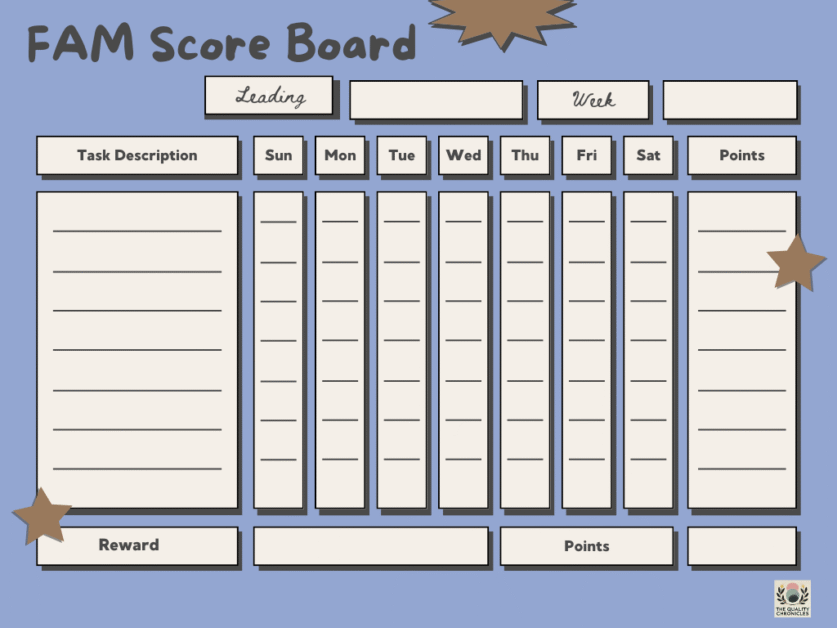Naa Na Boo Bo: between school runs, work calls, after-school clubs, and trying to make a decent dinner, “balance” can feel like a fantasy. This is especially true when you’re focused on Balancing School and Family Time.
But what if balance wasn’t about doing everything perfectly, but doing what matters consistently?
This post dives into real-life strategies to help families stay connected while still getting things done. If you’re a parent juggling spelling tests, soccer practice, and trying to sneak in a family movie night—you’re in the right place.
Balancing School and Family Time is essential for a happy life. Understanding the dynamics involved in Balancing School and Family Time can lead to greater satisfaction in both areas.
Join us as we explore different aspects of Balancing School and Family Time in more detail.
What You’ll Get From This Guide:
✅ Easy routines to bring order to the chaos
✅ Ways to encourage your child’s hobbies—without overwhelm
✅ Practical tools to manage your family’s time (without burnout)
✅ Tips on building connection in the busiest of seasons
✅ A fresh mindset on what balance really means
By implementing these strategies, families can begin Balancing School and Family Time more effectively.
1. Make Balance a Family Mission—Not a Solo Project
Start with one simple shift: include your kids in the planning. Sit down together once a week and chat about:
Striving for balance will enhance your family’s experience of Balancing School and Family Time.
Many families struggle with Balancing School and Family Time, making it crucial to find effective strategies that foster connection.
Finding effective strategies for Balancing School and Family Time is crucial for maintaining harmony in your household.
- What’s coming up?
- What’s feeling fun vs. overwhelming?
- What can we move or skip?
Use a shared planner, fridge calendar, or a visual schedule board. If everyone has a voice, they’ll also feel ownership—and less resistance.
💬 Want a downloadable version of this guide?
Let us know in the comments! If you’d like a printable version with planner templates or a summarized checklist, just drop a comment below: we’d be happy to share it with you
Involving everyone in the conversation about Balancing School and Family Time will help create a sense of ownership and responsibility.

Every family has a unique approach to Balancing School and Family Time that can inspire others.
Kid Tip: Let your child pick one fun activity and one must-do chore every week. It builds autonomy and teamwork.
2. Say No (Yes, That’s Allowed)
Every club, class, and extracurricular looks amazing—but too much of everything leads to stress.
Here’s your new filter:
🌟 Does it light them up?
🌟 Does it fit your current energy and schedule?
🌟 Will it still matter a year from now?
If not, skip it. Fewer commitments = more connection.
Reminder: Downtime isn’t lazy. It’s necessary. Boredom breeds creativity and calm.
3. Protect Pockets of Family Time (Like a Guard Dog)
If it’s not on the calendar, it probably won’t happen. Whether it’s 15 minutes or a whole evening, block out time just for your people.
🎲 Ideas That Work in Real Life:
- Wednesday “Unplug & Chill” nights
- Saturday morning pancake bar
- 10-minute after-dinner walks
- Family “clean & dance” hour on Fridays
Consistency matters more than length or activity.
4. Make Homework a Drama-Free Zone
Here’s how to turn homework hell into homework flow:
With effective planning, Balancing School and Family Time can become a fulfilling experience.
- Set up a regular workspace (quiet, comfy, device-free)
- Use a timer to encourage focus with built-in breaks
- Break large tasks into bite-sized chunks
- Offer help—but don’t take over
Let kids take the lead. You’re the guide, not the driver.
5. Start Time-Smart Habits Early
You don’t need fancy planners for this. Even a sticky note list or magnetic whiteboard works.
🎯 Teach kids:
- How to plan their day (and pivot when it shifts)
- How to chunk time (homework vs. play vs. chores)
- That it’s okay to rest—it’s part of success
It’s not about discipline—it’s about awareness.
6. Show Them What Balance Looks Like
If your kids see you rushing nonstop, they’ll copy that. If they see you take breaks, honor weekends, and say “no” to too much—they’ll learn that too.
🌱 Model:
- Saying, “I need a break.”
- Protecting time for family over screens
- Celebrating small wins and effort, not just outcomes
Ultimately, Balancing School and Family Time is an ongoing process filled with opportunities for growth.
7. Ditch Perfection, Choose Flexibility
Notably, prioritizing Balancing School and Family Time can lead to improved well-being for everyone involved.
Things will fall apart sometimes. You’ll miss dinner. Homework will get forgotten. Someone will cry in the car.
It’s okay. The real goal is connection, not a perfectly color-coded calendar.
Think of balance as a rhythm, not a rulebook.
Remember, Balancing School and Family Time doesn’t have to be perfect; it just has to be intentional.
Final Thoughts: You’re Already Doing More Than You Think
As you navigate Balancing School and Family Time, consider what works best for your family.
You’re showing up. You care. You’re trying. That counts.
Balancing school, hobbies, and family life isn’t a fixed formula—it’s a series of choices made with heart. Some days will feel like chaos, others like magic. That’s normal.
What matters most is showing your kids how to live intentionally—with space for joy, love, and the people who matter most.
Quick Recap: Time-Smart Family Life
✅ Plan together as a team
✅ Cut the clutter from your calendar
✅ Prioritize quality time over packed routines
✅ Help kids own their schedules for Tips on Quality Flow
✅ Model balance in your own life
✅ Stay flexible, always
Frequently Asked Questions (FAQs)
Q1. How can I teach time management to my child without nagging?
Start with small, visual tools like timers or checklists. Encourage reflection: “How did your day go?” instead of “Did you do everything?”
Q2. What if my child wants to do everything?
Support their passions, but set boundaries together. Ask them to choose top priorities and explain why.
Q3. How do I create meaningful family time during busy school weeks?
Keep it simple. Even 10 minutes of undistracted connection can have lasting impact—like talking during dinner, walking the dog, or reading together.
Q4. What if screen time is taking over?
Set healthy limits and offer appealing alternatives. Think games, hobbies, or one-on-one outings. Lead by example.
Q5. How do I know if we’re “doing it right”?
If your family feels mostly connected, heard, and calm—you’re on the right track. If not, pause and reassess. There’s always room to reset.
💬 We Want to Hear from You!
How does your family find balance? Share your wins, struggles, or favorite family rituals in the comments—or tag us @thequalitychronicles on Instagram or Facebook. Let’s grow this conversation together.

Ultimately, Balancing School and Family Time is about making choices that reflect your values and priorities.


